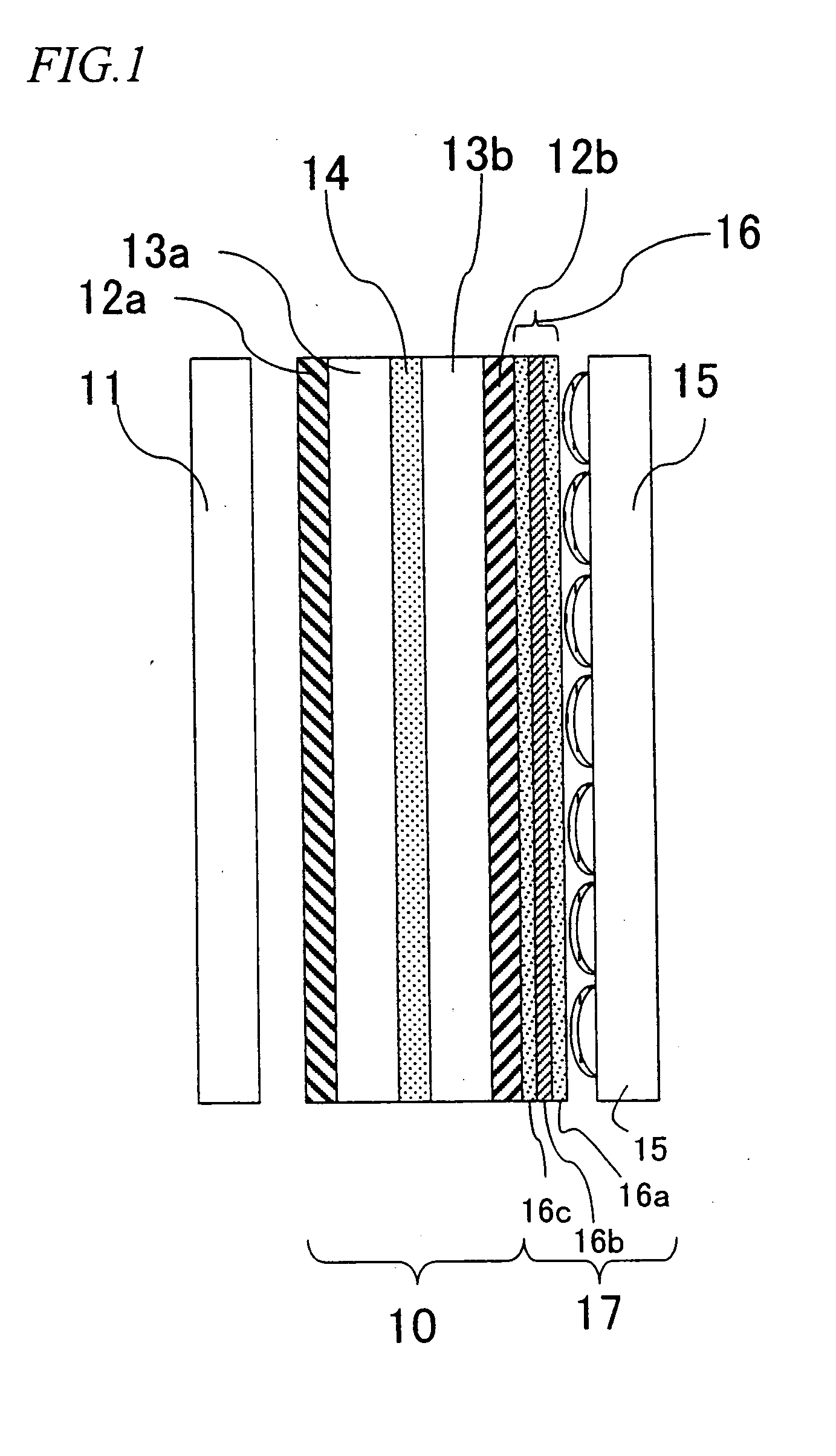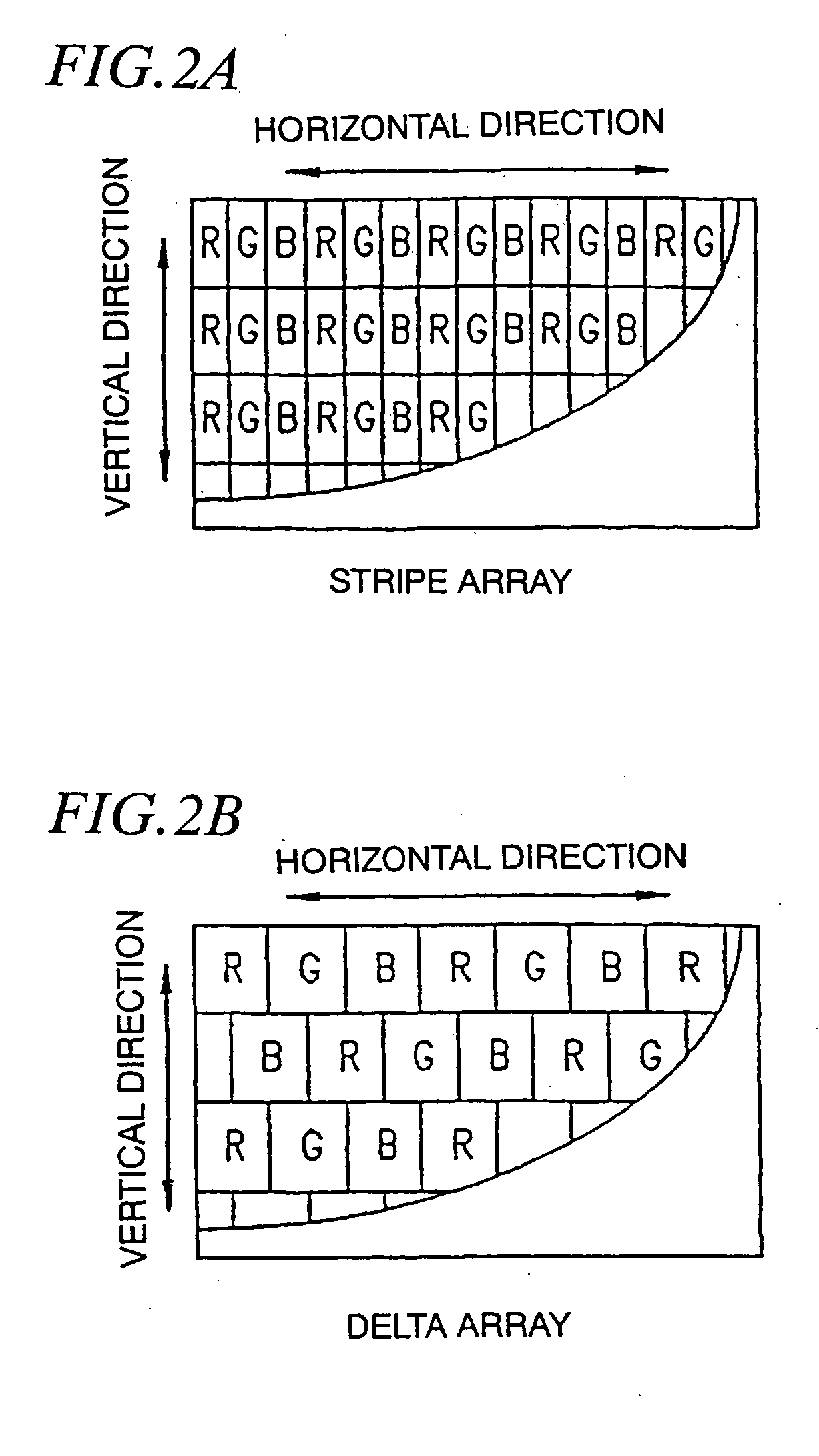Method for fabricating a laminate film, laminate film, and method for fabricating a display device
a technology of laminate film and display device, which is applied in the direction of identification means, instruments, polarising elements, etc., can solve the problems of large dependence on viewing angle, reduced display quality, and viewer's failure to correctly recognize display images, so as to reduce the generation of defects, prevent deformation, and easy bonding and fixing
- Summary
- Abstract
- Description
- Claims
- Application Information
AI Technical Summary
Benefits of technology
Problems solved by technology
Method used
Image
Examples
embodiment 1
[0078]FIG. 1 is a cross-sectional view of a liquid crystal display device used in Embodiment 1 of the present invention. Referring to FIG. 1, the liquid crystal display device in this embodiment includes a surface illuminant 11, a liquid crystal display element 10 and a laminate film 17 which includes an adhesive film 16, and a lens sheet (lens film) 15 as an optical film.
[0079] The liquid crystal display element 10 is essentially including: an active matrix substrate 13a including thin film transistors (TFTs), transparent pixel electrodes, and the like formed in a matrix on a transparent substrate made of glass or plastic; a counter substrate 13b including transparent electrodes and color filters formed on a transparent substrate made of glass or plastic; liquid crystal material 14 as a display medium sealed in a space between the two substrates; and a pair of polarizing plates (polarizing films) 12a and 12b placed to sandwich the two substrates.
[0080] In this embodiment, twisted...
embodiment 2
[0125] Embodiment 2 of the present invention will be described with reference to FIGS. 14 to 21.
[0126]FIG. 14 is a cross-sectional view illustrating a liquid crystal display device used in Embodiment 2 of the present invention. Referring to FIG. 14, the illustrated liquid crystal display device, which is of a reflection type, includes a reflection type liquid crystal display element 140 and a laminate film 147. The laminate film 147 includes a transparent member 145 and a prism sheet 146 as an optical film, and the transparent member 145 includes a first adhesive layer 145a, a transparent support 145b, and a second adhesive layer 145c.
[0127] The reflection type liquid crystal display element 140 is essentially including: an active matrix substrate 141a including thin film transistors (TFTs) and transparent pixel electrodes arranged in a matrix and a reflector 142 formed on a substrate made of glass, plastic, a monocrystalline silicon, or the like; TN liquid crystal material 143 ha...
PUM
| Property | Measurement | Unit |
|---|---|---|
| thickness | aaaaa | aaaaa |
| diameter | aaaaa | aaaaa |
| thickness | aaaaa | aaaaa |
Abstract
Description
Claims
Application Information
 Login to View More
Login to View More - R&D
- Intellectual Property
- Life Sciences
- Materials
- Tech Scout
- Unparalleled Data Quality
- Higher Quality Content
- 60% Fewer Hallucinations
Browse by: Latest US Patents, China's latest patents, Technical Efficacy Thesaurus, Application Domain, Technology Topic, Popular Technical Reports.
© 2025 PatSnap. All rights reserved.Legal|Privacy policy|Modern Slavery Act Transparency Statement|Sitemap|About US| Contact US: help@patsnap.com



